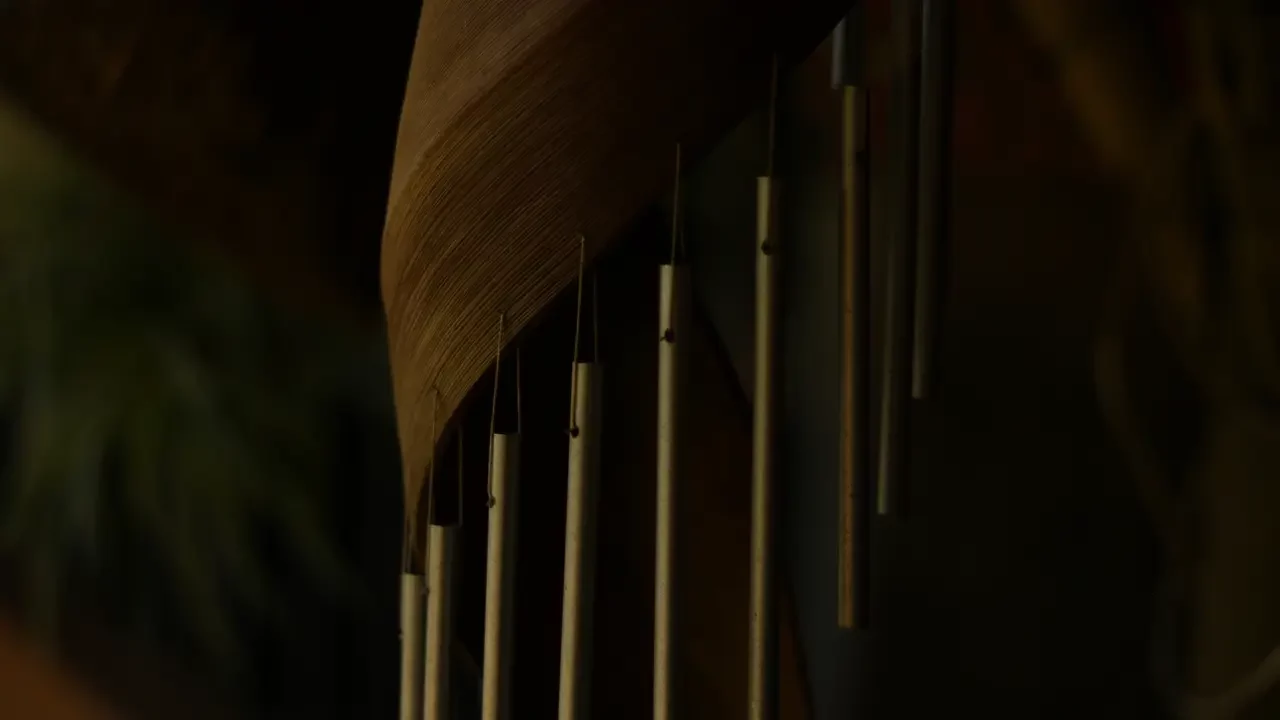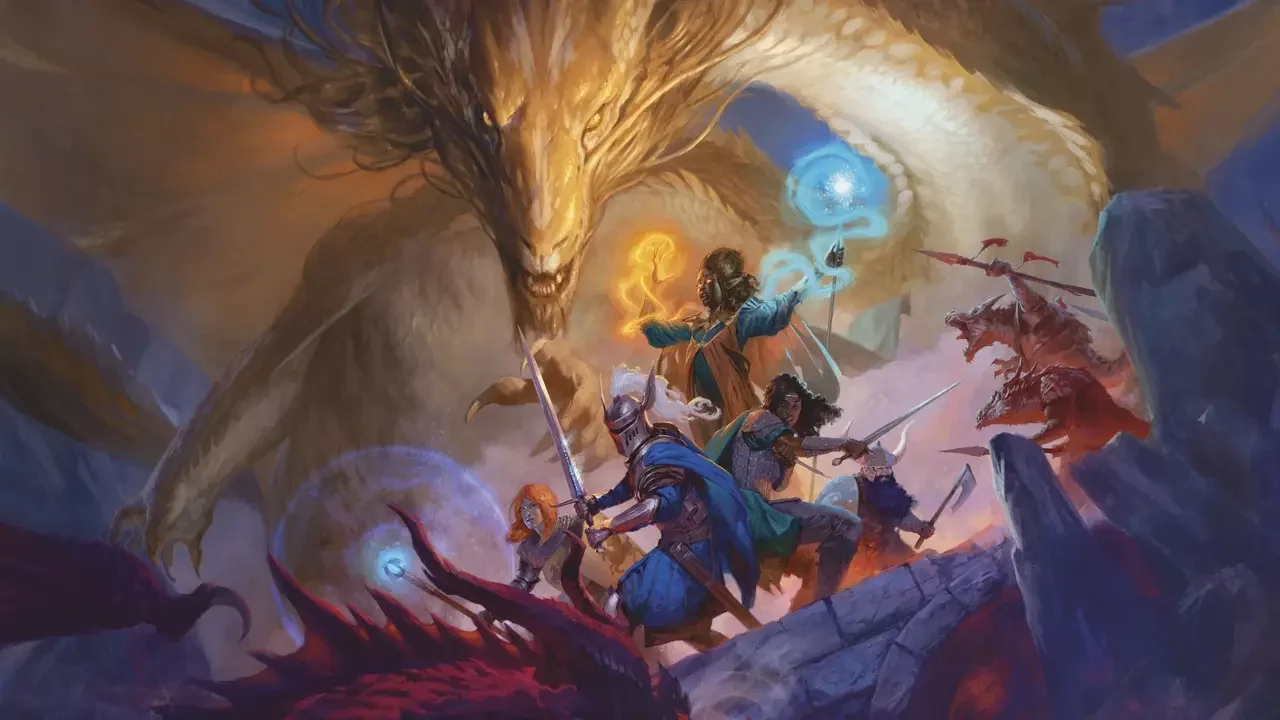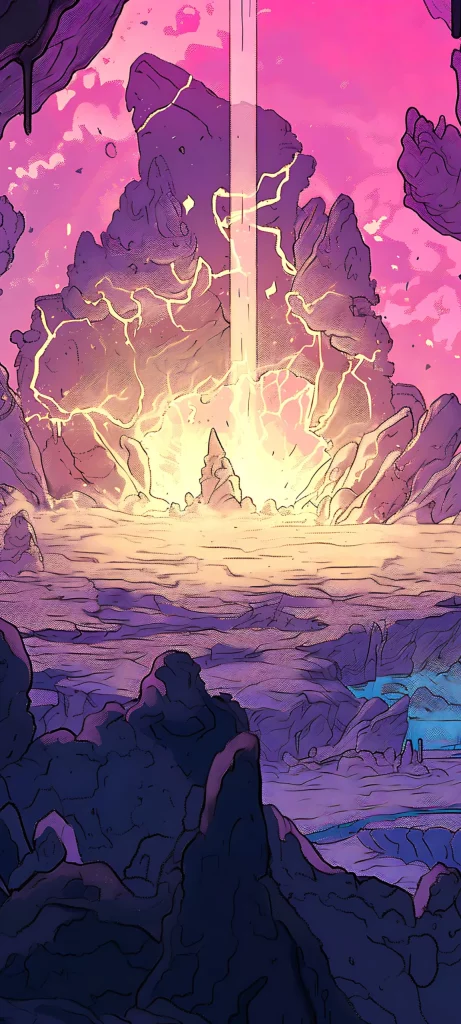

Adding content to FoundryVTT can really be a hassle. While that virtual tabletop is probably the best available so far, it takes some time to get used to it and set up your adventures. Hopefully, we can use tools to help with the preparation. One of these tools is Moulinette.
Moulinette is a tool to help manage assets and build scenes on FoundryVTT. It's used to add content you acquired on other platforms (e.g. Patreon). Basically, it's a content delivery service which costs only $2.00 per month on Patreon.
If you are one of our Patreon supporters, and a Moulinette supporter, you will have access to our whole Patreon-exclusive content there. Other content – from our shop or other composers – can be included by several ways provided by Moulinette itself. More on this ahead.
If you use ForgeVTT: all of our albums can be obtained on TheForgeBazaar.
We do not own Moulinette nor have any affiliate link with them.
How to set up Moulinette
On FoundryVTT, click on "Add-on Modules" and install Moulinette Core and Moulinette Sounds & SoundPad (module) – you will need both. There are modules for maps, scenes, tiles, etc., but we will not cover these (highly recommended) elements in this post.
Launch a game session and click on the macros. Select "Open Moulinette - Execute Macro". Then, click on the cog on the bottom left corner, click "Help" and "Patreon Integration". There, you can connect either with your Patreon or Discord accounts.
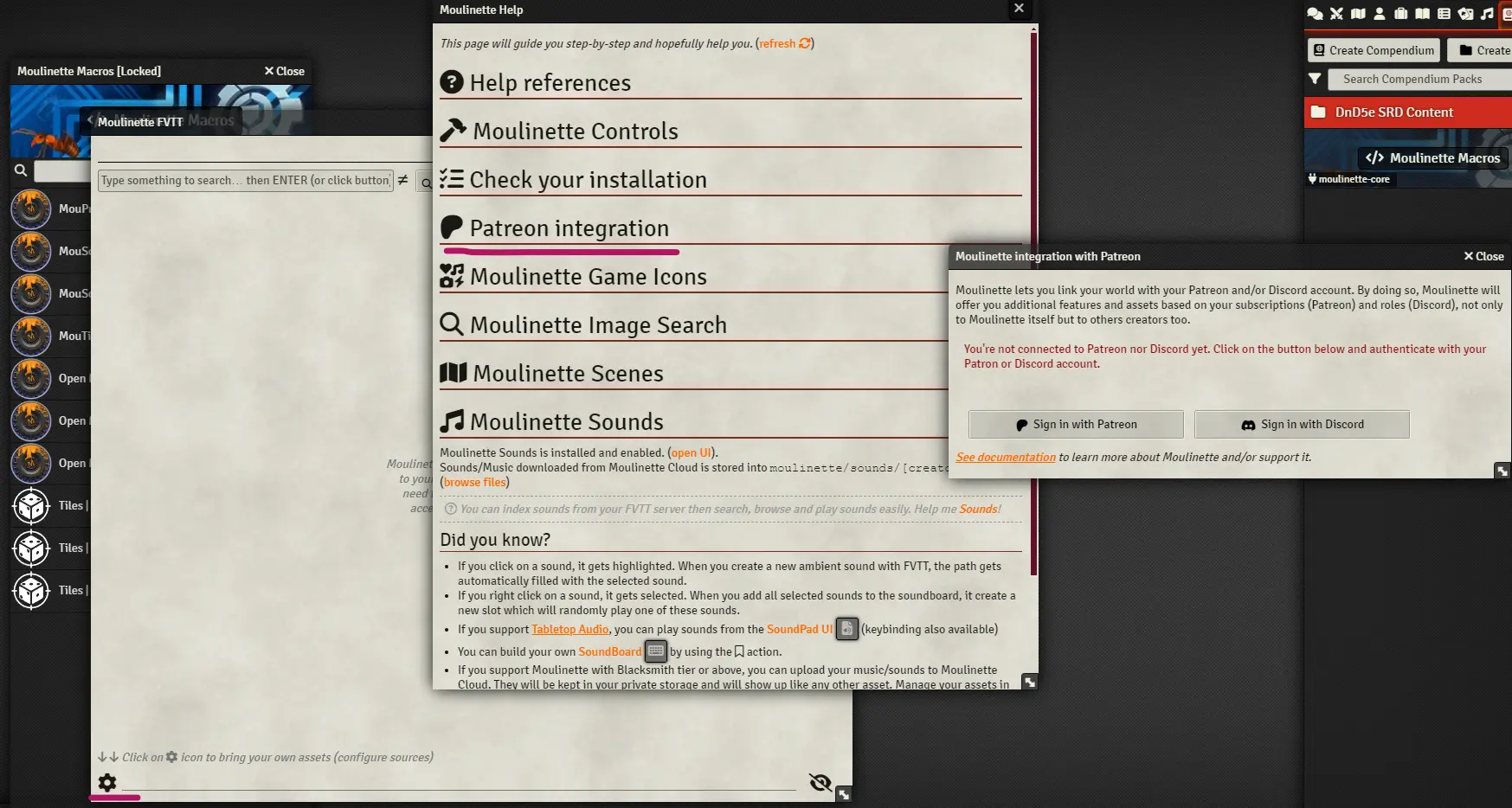
This is the window that will appear once you are connected with Patreon:
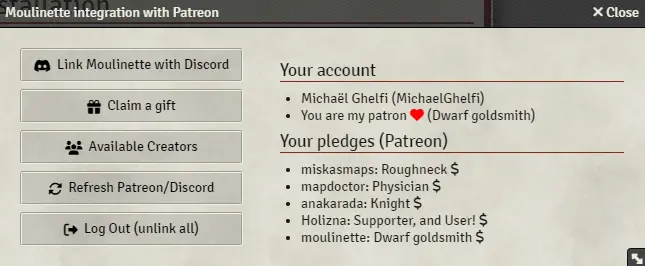
How to use the content on Moulinette

Moulinette should be indexing what you got access to in the background. Reopening it may be necessary after you connected for the first time.
I'll show you how to use the audio part, but do not worry, the rest is very similar.
Click on the music note to open the window shown below. This tab references every audio track from all the creators you are subscribed to – considering your tier, of course. As you can see, I have access to 3566+ sounds, mostly from us.
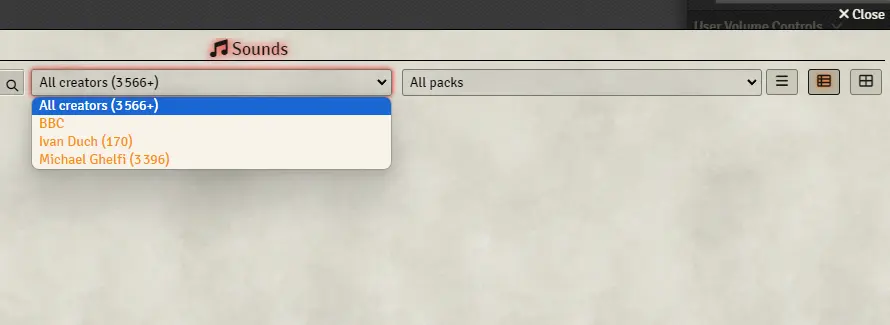
How to find what you need? For example, by simply writing "forest" in the search box, Moulinette immediately referenced all of the sounds available to me, their path (such as "Ambiences/Basic/forest" - if the content creator did a good job organizing their content), and how many in each category.
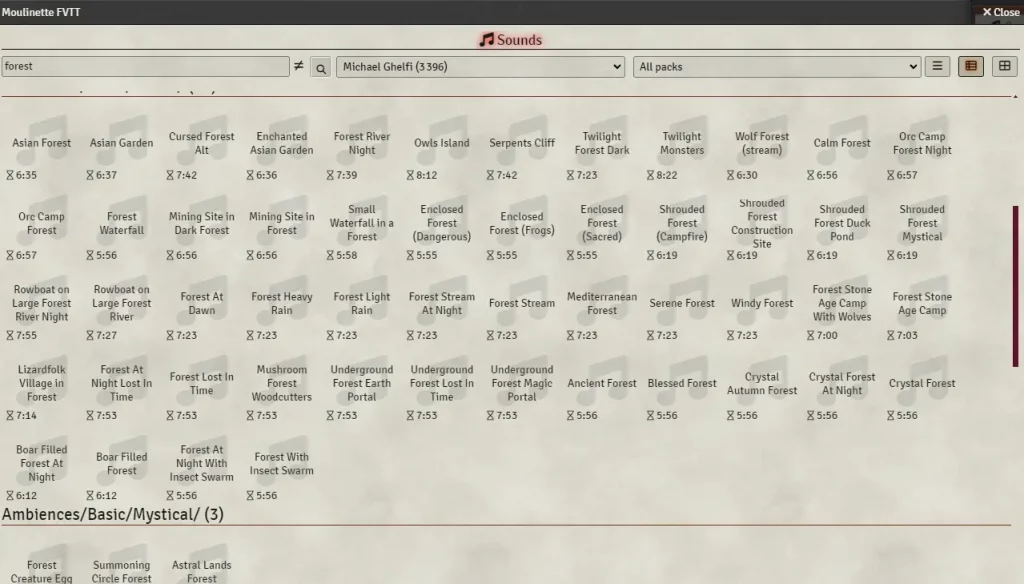
More settings
On each audio file, you'll get the following options, from left to right:

- Plays the file without adding it to playlists or collections;
- Adds the sound to tableboard (more on this later);
- Copies the path to clipboard;
- Loops the audio once you play it;
- Plays the sound in FoudryVTT and adds it to your playlist (see below). If your creator correctly organizes the content for Moulinette, as we do, it will show the file's path as well to make it easier for you. If the looping option is enabled, the track comes with the looping option activated.
You can also see the name file. Here we have Eldritch Forest Campfire.ogg. Ogg being the lightest format available and offering a higher quality than mp3. That's the main format we share.
Now, you can easily create new playlists and drag-and-drop the tracks from Moulinette Soundboard to your own playlists. It's particularly handy if you frequently create new worlds on FoundryVTT.
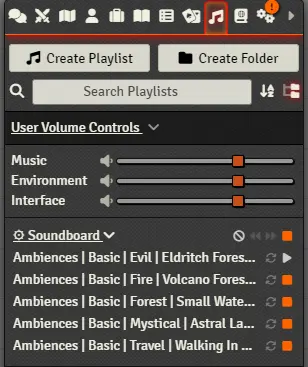
Tableboard / Create Favorites
This second option is useful for sound effects (SFX). Click on it and the first window below will appear: ten slots that can be filled with specific sounds for quick play. Also, you can rename the track, the new name will appear after hovering the slot on the second window below, the Soundboard.
You can add icons to the slots, many are already available on Moulinette, but you can add your own. Delete tracks by right-clicking on the slot.

What if I unsubscribe from Moulinette?
You get to keep every track you have already downloaded, you just won't be able to download newer ones. However, Moulinette is a cheap and incredibly useful solution, so we highly recommend you stay subscribed.
Content outside of Patreon
A third of our content is sold on our store, most other composers retire their older Patreon pieces on their own stores after a time or compose specific content as well, not distributed on Patreon.
However, this is not a problem for Moulinette users, since you can add this content and customize its organization however you want.
First, on the Sounds window over at Moulinette, you will find these options at the bottom. The key button is the Configure sources & Index sounds, but before clicking on it we must add the content in the right folders.

If you have your audio files downloaded and ready for use, head over this path on Windows:
Users\[username]\AppData\Local\FoundryVTT\Data\moulinette\sounds\custom
From there, create two levels of folders. The first is for "Publishers" (in this example, Michael-Ghelfi) and the second is for "Packs" (namely here, Ambiences). We recommend to name the folders as shown below, at least for the Publishers name (Michael-Ghelfi), so it looks better.
..\moulinette\sounds\custom\Michael-Ghelfi-Studios\Ambiences
Now, you can add our tracks and organize them as desired. Our tip is for you to create folders and subfolders to keep your Foundry install clean.
For example, we should add the track "custom added ambience.wav" directly in the "Ambiences" folder; and the track "custom added forest ambience.wav" in a new subfolder inside titled "Forest". Once you're finished, you can finally click the button Index sounds. Here's the result:
The subfolders, such as the "Forest" one, made it more organized. If you want to make things simpler, you can download for free our directory structure. It should fit the work of other composers as well.
Bandcamp
If you get our ambiences on Bandcamp, you can alternatively dump the 550+ ambiences tracks in one folder and call it a day. Since the track names we chose are always clear an precise, you can rely on the search box within Moulinette. Create another folder for music.
Sadly, Bandcamp doesn't allow us to share folders or tags, so we can't simplify that task for you any further. But, if you need more precision, you can check our official databases for up-to-date tags about each track we have composed.
Contact us if you have any further questions. Now, go forth and enjoy your simplified virtual tabletop experience!

